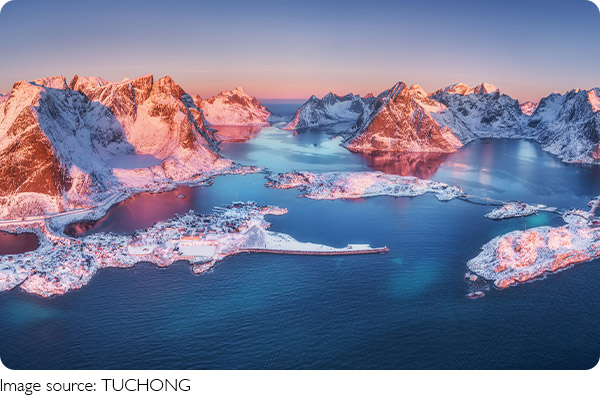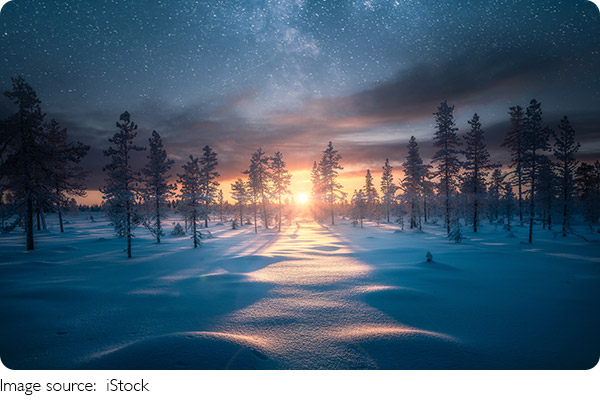Before Your Artic Adventure

Planning a winter getaway to Northern Norway? If you're wondering how to dress and what to pack for the chilly conditions, don't worry!
This guide offers all the practical advice you need to experience the magic of this stunning region, from the aurora borealis to activities like whale watching.
Climate and Weather
Understanding the Climate
Northern Norway is vast, stretching from the Nordland region up to Troms and Finnmark, and even includes the Svalbard archipelago. The weather varies greatly depending on where you are. In general, winters can begin as early as October and last until late April or even longer.
Along the coast, the weather tends to be milder, with temperatures ranging from -5°C to 5°C. However, inland areas and farther north can experience harsher conditions, with temperatures plunging to -30°C, especially in places like Finnmark and Svalbard.
What to Expect Day-to-Day
The weather can change rapidly, so always prepare for sudden shifts. You may experience sunshine, rain, snow, and freezing temperatures all in one day. If you're planning to visit the Svalbard islands, expect even colder temperatures, often reaching -20°C to -30°C during winter. Always check local weather updates before your trip to stay informed.
What to Wear in Northern Norway
Layering for Comfort and Warmth
The key to staying warm in Northern Norway is layering. Start with a moisture-wicking base layer such as long-sleeve shirts and leggings made of wool or synthetic material. Add a middle layer of fleece or a wool sweater for insulation.
For extremely cold days, add outdoor-ready pants designed for cold climates.
Outer Layer for Protection
An insulated jacket, such as a down-filled coat, is essential for keeping the heat in. If you're planning to engage in outdoor activities, consider a waterproof and windproof jacket to protect against rain, snow, and gusty winds. Opt for insulated and weather-resistant pants for full protection.
Accessories to Keep You Cozy
A hat, gloves, and scarf are must-have accessories. Mittens are warmer than gloves, so they are a great choice for cold days. Wear a thick scarf or a high-neck sweater to keep your neck warm, as it's a key area to protect. Don't forget to wear waterproof boots with good soles to handle snow and icy terrain. Wool socks are also important to prevent cold feet.
Additional Gear
In case of icy surfaces, you may want to bring crampon spikes for extra traction when walking. For more active adventures, you'll often be provided with thermal suits, but it’s still essential to dress warmly underneath.
Transport and Accessibility
How to Get Around
Transportation in Northern Norway can vary depending on the location. Coastal cities like Bodo and Tromso are well connected by ferry and flight, but remote areas like the Svalbard islands may require additional travel planning.
Make sure to book transport in advance, especially during the busy winter season.
Accessibility for All
Although Northern Norway is remote, many tour operators offer services tailored to visitors with special needs. The infrastructure, especially in larger towns, is accessible, but remote villages may have more limited facilities.

Final Thoughts
Visiting Northern Norway during the winter offers a unique and magical experience, but preparation is key. By dressing in layers, staying informed about the weather, and packing the right accessories, you'll be able to fully enjoy everything this beautiful region has to offer. Whether you're chasing the northern lights or taking part in thrilling winter sports, Northern Norway promises an unforgettable adventure.
-
 Peacock's Hidden TruthIs the peacock's tail really about beauty? The truth behind its stunning feathers might surprise you!
Peacock's Hidden TruthIs the peacock's tail really about beauty? The truth behind its stunning feathers might surprise you! -
 Cut Your Bills Smart Now!Ready To Slash Bills? Learn Smart Hacks That Actually Save You Money Fast! Start Today!
Cut Your Bills Smart Now!Ready To Slash Bills? Learn Smart Hacks That Actually Save You Money Fast! Start Today! -
 Own the Fast BreakHow do you turn speed into scoring—and stop it on the other end?
Own the Fast BreakHow do you turn speed into scoring—and stop it on the other end?